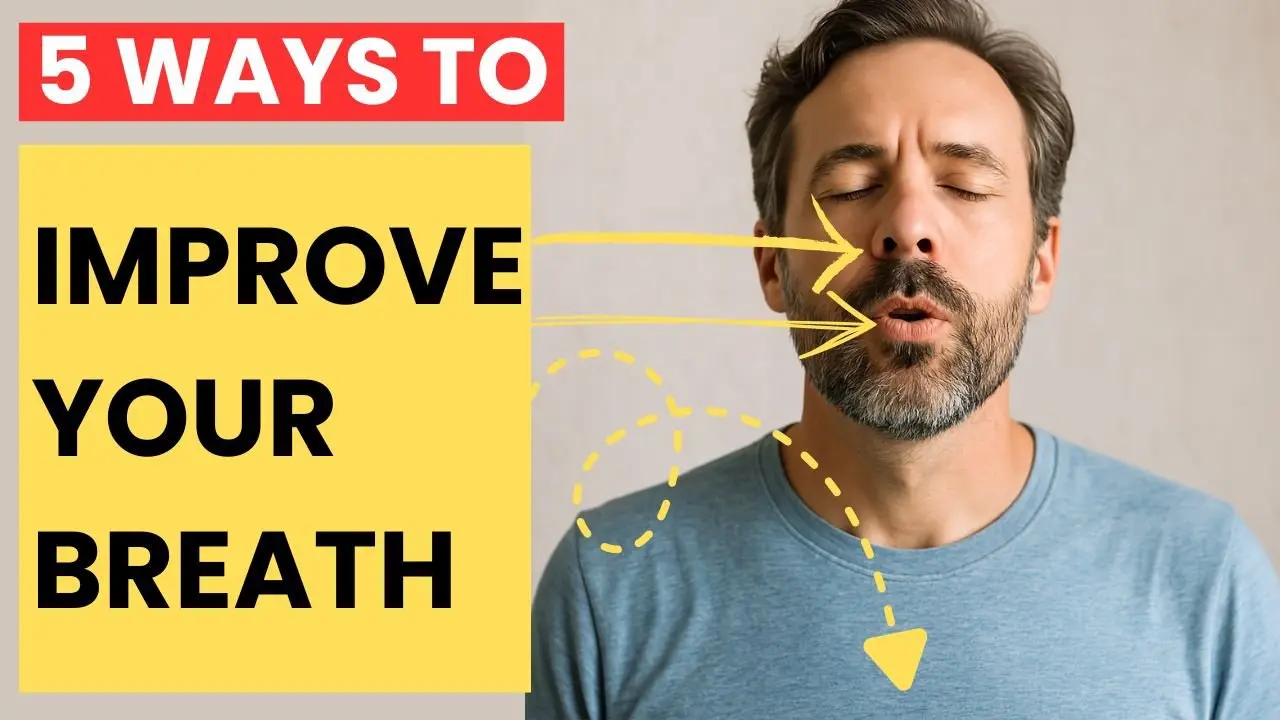Breathing—something we do naturally, but rarely think about. But did you know that improving how you breathe can have a profound impact on your overall health? From reducing stress to enhancing your lung capacity, small changes in how you breathe can lead to remarkable benefits. In this article, we’ll explore five simple ways to improve your breathing and help you unlock your body’s true potential.
1. Stop Breathing Through Your Mouth
You’ve probably heard the advice to breathe through your nose rather than your mouth, but how many of us actually follow it? Mouth breathing can get the job done when you're in a rush, but it's far from optimal. In fact, research shows that nasal breathing is significantly more efficient than mouth breathing.
The nose does more than just allow air to pass through. It filters, warms, and humidifies the air before it reaches your lungs. This process helps to maximize oxygen uptake—up to 20% more oxygen compared to mouth breathing. Studies published in The Journal of Applied Physiology suggest that nasal breathing also supports better lung function and reduces the strain on your cardiovascular system. So, next time you’re heading out for a walk or sitting at your desk, make a conscious effort to breathe through your nose. Your body will thank you!

2. Use Your Nose to Filter and Protect
When you breathe through your nose, you're not just taking in air—you're conditioning it. Your nasal passages act as a protective barrier, filtering out dust, allergens, and pathogens before they enter your lungs. This is particularly important in polluted or allergen-rich environments. Plus, the air you breathe in through your nose is also moistened and warmed, making it easier for your lungs to extract oxygen efficiently.
Using your nose for breathing also has a calming effect. It helps regulate the autonomic nervous system, leading to reduced stress and enhanced relaxation. So, whether you’re in a stressful meeting or just running errands, take a deep breath through your nose to help calm your mind and body.

3. Improve Your Lung Capacity
Lung capacity is more than just a measure of how much air you can inhale—it’s closely tied to your overall health and longevity. In fact, studies from over 40 years ago found that lung capacity was the most significant marker of longevity, even more so than diet or genetics.
As we age, our lung capacity naturally decreases, starting around the age of 35. However, there’s good news: You can maintain and even improve your lung capacity with proper breathing techniques. Slow, controlled breathing, along with regular physical activity like yoga, can help you maintain lung health and stave off age-related decline. A study published in The European Respiratory Journal found that individuals who practice yoga regularly tend to have better lung function and increased respiratory efficiency.
To enhance your lung capacity, try incorporating breathing exercises into your daily routine. Start by taking slow, deep breaths, focusing on expanding your diaphragm as you inhale. Over time, this practice will help improve your lung function and overall respiratory health.

4. Slow Down Your Breathing
In our fast-paced world, it’s easy to find ourselves breathing rapidly without even realizing it. Fast, shallow breathing sends signals to the brain that we’re in danger, triggering the “fight or flight” response. This leads to an increase in stress hormones like cortisol, which can negatively impact your health over time.
Slowing down your breathing is one of the simplest and most effective ways to combat stress. By taking slow, deliberate breaths, you activate the parasympathetic nervous system—your body’s “rest and digest” mode—which helps lower your heart rate, reduce blood pressure, and promote relaxation.
Start by breathing in for a count of three, holding for a second, and exhaling for six. This simple technique can be done anywhere—whether you’re stuck in traffic, preparing for a big presentation, or winding down before bed.

5. Practice Breath-Holding for Focus and Performance
Breath-holding might sound counterintuitive, but it’s actually a powerful tool for improving your health and performance. When you hold your breath, you increase your body’s tolerance to carbon dioxide, which in turn helps improve your overall breathing efficiency. Breath-holding also forces your body to use oxygen more effectively, enhancing athletic performance and mental focus.
To start, try holding your breath for 10-15 seconds during your daily routine. Over time, gradually increase the duration to build your lung capacity and improve your ability to focus under pressure.
Conclusion: The Simple, Transformative Power of Breath
The beauty of these breathing techniques is that they’re incredibly simple to implement yet can have transformative effects on your health. By focusing on breathing through your nose, improving your lung capacity, slowing down your breath, and incorporating breath-holding exercises, you can reduce stress, increase oxygen efficiency, and enhance your overall well-being.
Ready to improve your health with just a few breaths? Start today by incorporating slow, controlled breathing into your daily routine. The next time you feel stressed, take a moment to breathe deeply and slowly through your nose. Your body and mind will thank you for it.



Leave a Comment